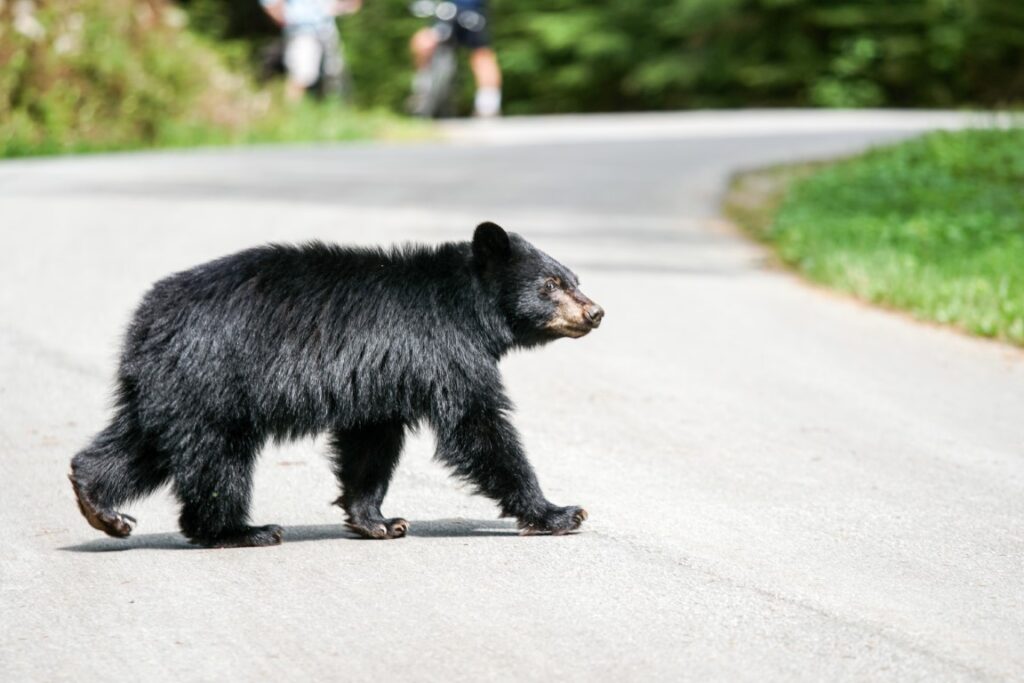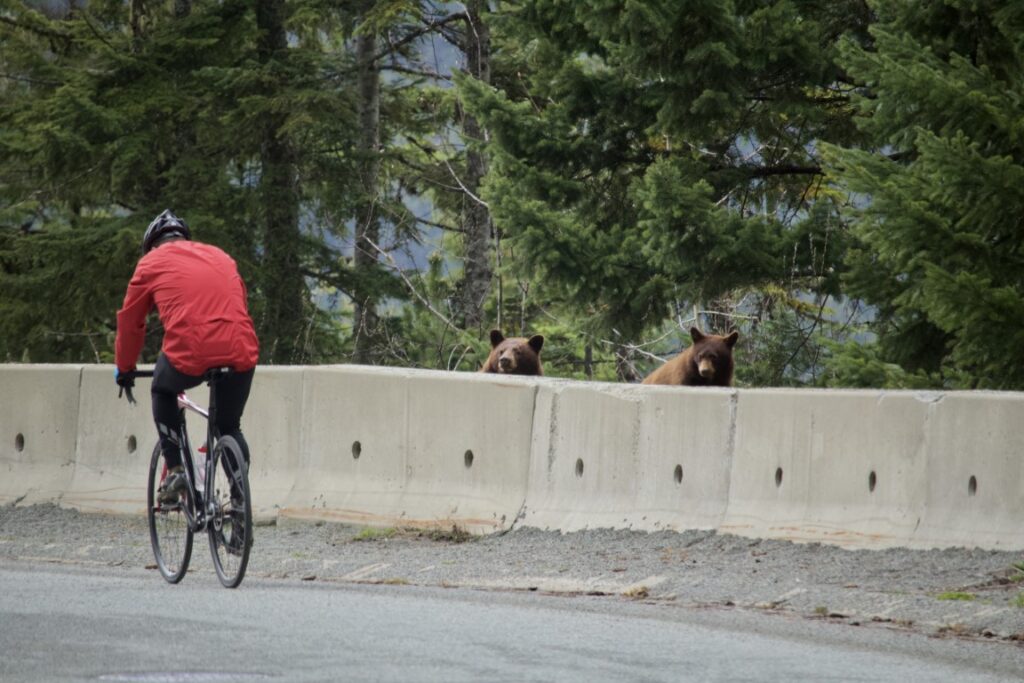Biking in Bear Habitat

Biking is a high-speed, quiet, and often technical activity, which increases your chances of a surprise encounter with a bear. Learn how to respond if you meet a bear and follow these best practices to help reduce your impact and risk of a close encounter:
- Respect all warnings, including bear in-area notices and trail closures
- If you see a bear in the distance and it does not notice you, quietly turn around and take an alternate route
- Be alert and aware of your surroundings. Avoid wearing headphones
- Stay on legal, established trails. Using unsanctioned trails makes your behaviour less predictable to bears, further increasing the risk of a surprise encounter
- Be heard. Use your voice to alert wildlife that humans are close by. Use a loud, firm voice and call out often. Be louder on narrow, low visibility trails and when travelling by rivers and creeks
- Slow down on corners and in low visibility areas
- Travel in groups; avoid biking alone
- Tell someone your trip plan (destination, route and expected return time)
- Learn to recognize and be alert for natural bear foods, bear tracks and bear scat. Avoid or leave areas with an abundance of fresh bear sign or natural bear foods
- Never intentionally feed bears. Bears that find food from humans are often killed
- Never leave food unattended. Bears are opportunistic, always keep food within reach
- Pack in, pack out. Littering the trails with food scraps and garbage encourages bears to spend more time close to areas occupied by humans
- Avoid biking between dusk and dawn when wildlife is most active
Off-leash dogs can pressure bears to defend themselves and are the cause of many negative encounters between people and bears. We advise keeping your dog at home to reduce risk and impact on wildlife.
Bears and other wildlife have a natural chase instinct. If you encounter a bear whilst biking, do not pedal away, this could trigger the bear’s instinct or curiosity. Your movements around bears should be calm and slow.
If you meet a bear: be present, stay calm and use a calm voice to identify yourself as human.
Slowly dismount and place your bike between you and the bear. Prepare your bear spray and continue to speak to the bear in a calm tone as you slowly back away.
Keep the bear in sight and focus your attention on their chest. Animals see eye contact as a threat. Using a calm tone and slowly distancing yourself communicates to the bear that you are not a danger to them. Ensure the bear has an exit. When the bear leaves, continue to slowly leave the area and take an alternate route.
On occasion, bears may appear to approach us. They can be pushed towards us by other bears or people, or they simply may wish to take the trail that you are on. On these occasions, the bear will not be focused on you. Calmly speak to them and slowly distance yourself and allow them to pass.
Very occasionally, bears may approach us with intent – this is usually out of curiosity. It is important that we set boundaries and do not allow bears to enter our personal space. If a bear is quietly approaching with their focus on you, stand your ground and use a firm tone – tell the bear they are too close. Raise your arms to appear bigger. Be persistent in using a firm voice and prepare your bear spray.
Bear spray is just as important as a helmet. Everyone in the group should have their own can. We advise carrying bear spray on all North Shore trails, year-round. Bear spray is your best defense in a surprise, close encounter when the bear does not leave. Wear bear spray on a chest or hip holster for immediate access as you may be separated from your pack or bike. LINK TO BEAR SPRAY INFO


